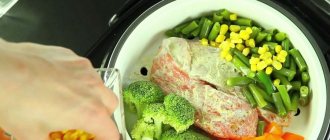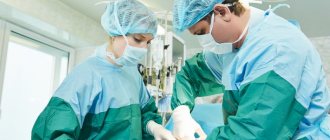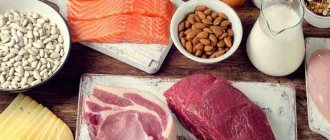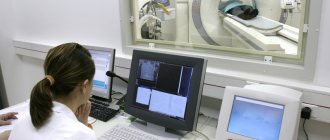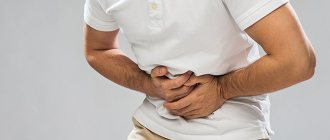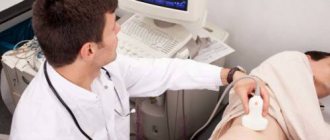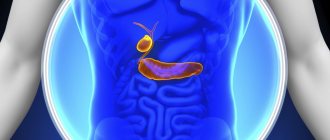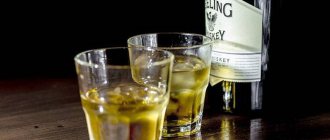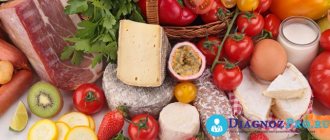The diet after removal of the gallbladder by laparoscopy is practically no different from the diet after abdominal surgery. Regardless of the method of removal, it is the most effective “cure” for recurrent stone formation and other postoperative problems. With proper organization of healthy food intake, adaptive changes will be easier and faster, and dyspepsia and pain in the right side will remain only in memories.
Why follow a diet after laparoscopy?
Removing the gallbladder dramatically changes the digestion process. The liver continues to produce bile in full (up to 2 liters per day), and the duodenum “awaits” the secretion only when food enters its cavity. But under new anatomical conditions, everything changes: bile enters the duodenal space constantly, causing irritation of the intestinal mucosa and disruption of intestinal function.
The lack of bile affects the condition of the liver and other organs of the digestive tract. In addition to the fact that they experience a greater load, their cells become unprotected from the action of hepatotoxic bile acids, which the bladder previously neutralized. Therefore, to help the body rebuild, cope with stress and consolidate the healing effect after surgery, it is important to follow a diet after removal of the gallbladder.
Basic nutrition rules
It is important to strictly follow a diet, eating only certain types of foods. There are basic nutritional rules that are recommended to be followed.
- The strict diet should continue for 6 months.
- One serving of food should not exceed 200 g.
- They eat up to 5 times a day.
- Long breaks between each meal are unacceptable.
- Have dinner 2 hours before bedtime.
- It is recommended to have breakfast early in the morning.
- Fasting or following weight loss diets is strictly prohibited.
- The daily calorie content of meals should not exceed 2700 kcal.
- To prevent congestion in the liver, it is necessary to consume easily digestible fats. You need to eat 2 tsp of vegetable or olive oil per day. They are added to dishes.
- To avoid stone formation, you need to monitor your weight.
- You need to drink up to 2 liters of water per day. Preference should be given to mineral water.
- It is recommended to give up coffee and strong tea.
- Food is consumed strictly at the same time. Thanks to this, the liver will get used to producing bile at a certain time.
- Dishes must be subjected to minimal heat treatment.
- All dishes are eaten warm.
Consequences of malnutrition
Many people who have had their gallbladder removed report a significant improvement in their health. Considering themselves absolutely healthy, they neglect to follow a diet and soon go back to see a gastroenterologist with a complex of unpleasant symptoms.
At first, indiscriminate consumption of heavy food, which the digestive tract without a gallbladder is unable to cope with, leads to the appearance of characteristic symptoms:
- nausea, sometimes vomiting, especially when the pancreas is overloaded;
- belching, heartburn - dyspepsia signals indigestion;
- bitterness in the mouth if the sphincter does not retain bile in the duodenum, resulting in its reflux into the stomach cavity and higher up the esophagus;
- pain in the right hypochondrium is a reaction to functional disorders of the sphincters, biliary tract and pancreas.
If you break your diet for a long time, inflammatory processes may appear. Stones will begin to form in the bile ducts, which will cause repeated surgery, blockage of the duct and dangerous consequences.
The most common complication is postcholecystectomy syndrome, which manifests itself as severe dyspepsia and pain under the right rib.
Undoubtedly, dietary errors can cause this complication for all groups of patients. But special attention should be paid to nutrition in patients whose bile ducts or sphincters were damaged during surgery. Postcholecystectomy syndrome is promoted by:
- late cholecystectomy;
- lengthening of the duct after surgery;
- the presence of stones in the common bile duct.
A high risk of complications appears if the patient was poorly examined before surgery. The presence of even the most harmless contraindications can negatively affect health after cholecystectomy.
General rules of diet No. 5 and its types
Nutrition after removal of the gallbladder corresponds to dietary table No. 5. This diet was specially formulated for patients who have problems with the liver and gall bladder. The therapeutic diet does not include strict restrictions, it is balanced and goes beyond the traditional understanding of diets with endless deprivations and a meager diet.
The transition to dietary nutrition is well tolerated. One of the important principles of the diet after gallbladder removal is frequent meals at regular intervals. Portions have a limited volume, but due to fractional meals, the patient practically does not experience hunger. Drinking plenty of fluids (up to 2 liters per day) promotes good intestinal function, improves metabolic processes, and also solves the problem of increased appetite.
Daily meals are organized in accordance with the following rules:
- Fats of animal origin are excluded from the menu; vegetable oils are allowed, but you should not get carried away with them beyond measure. It is not recommended to subject them to heat treatment; most often they are seasoned with ready-made dishes.
- Restrictions apply to salt. A safe daily intake is no more than 10 g per day. In order not to get carried away with a harmful product, do not add salt during cooking; for taste, a minimal amount can be added before eating.
- Allowed cooking methods are boiling, baking, steaming. Fried, smoked, salty foods do not bring any benefit, but significantly overload the digestive tract.
- Food should be warm; eating cold and hot food is not recommended. Eating food at an uncomfortable temperature provokes a spasm of the sphincters and ducts, which will result in pain and a delay in the excretion of bile.
- Dishes should be prepared from the list of recommended products, drink filtered water, weak tea, decoctions of medicinal plants (rose hips, chamomile), but you should not drink herbal teas often; it is better to consult a specialist about the frequency of using medicinal decoctions in food. Healthy drinks include compote, jelly, but only without sugar. It is replaced with honey, in the absence of allergies to bee products.
The listed nutritional principles are common to all types of table No. 5. In the first 2 years after removal of the gallbladder, strict adherence to the diet is required.
As the digestive tract adapts, you can occasionally allow yourself minor dietary violations, but completely returning to previous eating habits is dangerous due to the development of “new” pathological processes.
The diet after removal of the gallbladder has the following modifications:
- Diet No. 5a - involves the exclusion of foods that cause fermentation, rotting, and increased gas formation; it is prescribed for intestinal dysfunction, to spare the load on the gastrointestinal tract;
- Diet No. 5p - indispensable for problems with the functionality of the pancreas;
- Diet No. 5sch is necessary for people with postcholecystectomy syndrome or a predisposition to it, as well as a combination with other diseases of the digestive system.
Diet after gallbladder removal should not be perceived as a temporary measure. To feel good, it is important for a person who has undergone cholecystectomy to follow its rules constantly.
Authorized Products
Reducing the load on the digestive organs is the main goal of the diet. Easily digestible food improves the quality of breakdown and absorption in the absence of a gallbladder. The list of recommended products includes:
- lean meat - young veal, chicken, turkey fillet, sometimes you can afford milk sausages, unleavened ham;
- fish dishes are of particular value, but their fat content should not exceed 4%; you can safely cook carp, blue whiting, and pollock;
- it is allowed to diversify the menu with seafood;
- fermented milk products (kefir, curdled milk, yogurt, cottage cheese) are selected according to a similar principle - the less fat, the better;
- from cereals you can have buckwheat, oatmeal, sometimes rice;
- for dessert - dry cookies, unsweetened crackers, marshmallows, marshmallows, marmalade, fruit jelly; for those who have a sweet tooth, candy can be replaced with dried fruits.
Doctors recommend that each patient draw up his own list of allowed products, taking into account the personal characteristics of the body. This is done by selection, observing the reaction of the digestive system to a certain product.
Forbidden food
Excluding fatty foods from the menu creates ideal conditions for restructuring the digestive system. The absence of irritants and the ease of breakdown of nutrients are the key to quick recovery after surgery.
After removal of the gallbladder, it is forbidden to eat:
- lamb, pork, game, goose, duck due to their high fat content;
- mackerel, herring and other fatty fish;
- You should not drink homemade milk, soft cheese, whey, baked milk, fermented baked milk, butter are harmful, but you can occasionally season dishes with low-fat sour cream;
- fresh pastries and hot bread, pastries with cream, fried pies, donuts, puff pastries are prohibited;
- corn, pearl barley, barley.
Prohibited drinks include black coffee, strong tea, cocoa, hot chocolate, and sweet carbonated water. All types of alcoholic beverages, regardless of strength and quantity, are strictly prohibited.
Fruits, berries and vegetables after surgery
Plant foods are rich in fiber, healthy vitamins and minerals, but after removal of the gallbladder, some restrictions apply. Sour varieties of fruits and berries increase the formation of bile, which is undesirable in the absence of a gallbladder. Gastroenterologists allow eating sweet apples, pears, bananas and other fruits with a sweet taste, but citrus fruits, kiwi, sour apples, cherries, raspberries, strawberries, and currants are not allowed.
Vegetables are excluded if they contain essential oils, acids, or purines. Prohibited:
- radishes, sorrel, spinach;
- white cabbage;
- onions, radishes;
- legumes – peas, beans;
- greens, garlic.
Tomatoes, cucumbers, broccoli, zucchini, carrots, potatoes, pumpkin, melon, watermelon, and beets are allowed.
Alcohol after laparoscopy
The method of surgical treatment does not affect the quality of the diet. Alcoholic drinks are prohibited regardless of the stage of recovery; even 2 years after surgery you cannot drink them.
Foods prohibited by the therapeutic diet
You should not eat fast food, dishes of dubious origin, prepared with large amounts of fat, various spices. Regardless of the method of removing the gallbladder, the diet involves avoiding pickles, smoked meats, and any industrial semi-finished products. Self-cooking from high-quality products will significantly speed up recovery and help avoid complications.
What not to do on a diet with a removed gallbladder:
- onions of all kinds, radishes, white cabbage, other fermentable cruciferous vegetables, garlic;
- fatty meat, poultry with skin, layers of fat;
- baked goods, desserts with cream;
- peas, beans, other legumes, corn;
- fresh, salted, baked mushrooms;
- boiled, fried eggs;
- berries and fruits, sour vegetables.
Carbonated drinks, industrial juices, cocktails, and any hot, hot, or sour spices are immediately prohibited on the diet. You should not try out new products while recovering from surgery. You cannot drink coffee or strong black tea. Taking herbal decoctions and infusions requires consultation with a doctor.
On a note! If you want tea with lemon, then during the diet you can add zest to the cup. It does not increase the acidity of the entire drink, but gives a bright and rich aroma.
Cooking Features
The ease of load on the biliary tract ensures not only the choice of healthy foods, but also the method of preparing them. All dishes are prepared by boiling, baking or steaming; stewing is allowed, but not often. You should refrain from frying, canning, salting, and smoking.
There are special rules for different categories of dishes:
- First courses cannot be cooked in broth, no matter meat, fish or mushroom broth. Soups and borscht should be vegetarian without fried vegetables.
- Porridges are cooked in water or skim milk until fully cooked.
- Raw vegetables in large quantities after surgery cause constipation. It is much healthier if they are heat-treated.
- For good digestion, the meat must be chopped, twisted, after removing the fascia and fat.
- A similar rule applies to fruits; they are allowed to be baked and boiled.
- Spices and seasonings are included in the list of prohibited foods, so food is not prepared with them.
- Fresh vegetable oil is added to salads. If you need to dry food in a frying pan, this should be done without adding vegetable fat.
Food should always be fresh and of high quality, it should be prepared shortly before consumption.
Recipe examples
During the rehabilitation period after cholecystectomy, patients are often capricious, do not eat bland food, and refuse healthy foods and drinks. For a variety of nutrition, you can prepare chicken soufflé or fish baked in a slow cooker.
Options for soufflé and baked flounder
| Chicken soufflé | Baked flounder |
| Ingredients: two chicken breast fillets; 200 ml 1.5% milk; two eggs; a little salt and butter. | Products: one medium fish; vegetable oil; two potatoes salt, a mixture of peppers. |
| Prepare minced chicken breast fillet, add yolks, milk, salt. Blend everything with a blender until smooth. Beat the whites separately, carefully and slowly fold them into the minced meat with a spatula. Treat silicone muffin molds with butter and add minced meat. Bake for a quarter of an hour in the oven at 180°C. | Fillet the flounder, cut into portions, salt and pepper. Cut the potatoes into slices. Place fish pieces on foil and sprinkle with oil. Add potato slices on top, add salt, sprinkle with oil. Wrap tightly in foil and place in the slow cooker for 45 minutes. Baking mode. |
The soufflé will be fluffy if you do not open the oven during baking.
Differences in diet after laparoscopic and abdominal surgery
The choice of surgical intervention often depends on the advanced stage of the disease. Doctors advise not to delay treatment and to do a planned cholecystectomy using the laparoscopic method. After the planned operation, the body quickly recovers, the functioning of the intestines and biliary tract improves faster.
Laparotomy is accompanied by longer rehabilitation, so the period of gentle nutrition after abdominal surgery lasts longer. The principles and rules of the diet are identical, but after open surgery, the body will need more time for the recovery process.
How to diet
Monitoring the condition after laparoscopy continues for a couple of days. Doctors monitor the patient to exclude early complications and provide timely assistance. There is practically no food in the hospital. Immediately after cholecystectomy, eating and drinking is prohibited. If recovery from anesthesia is accompanied by severe thirst, you are allowed to blot your lips with a damp cloth. On the second day you can drink only water, but not more than 1 liter. You can do this 2-3 small sips every 15-20 minutes.
First days after surgery
On the first day after discharge, you are allowed to drink tea. The volume is gradually increased to 1.5 liters, and the portion to 1 glass. The next day, kefir is added, and a few days later, the menu after removal of the gallbladder can be varied with vegetable soufflés, liquid porridge with water, and pureed vegetable soup. A week later, when the body begins to get used to the new conditions, the diet corresponds to diet number 5 after removal of the gallbladder.
Meals in the first month
The rehabilitation plan for the first 30 days involves strict adherence to diet and nutrition. During this time, the digestive system becomes persistently accustomed to functioning without the gallbladder. If nothing bothers a person, the diet is expanded. New products are introduced gradually, observing the body's reaction. The absence of dyspeptic symptoms and discomfort in the right hypochondrium is possible only with high-quality nutrition and following the doctor’s recommendations.
First year without a gallbladder
Fractional meals with light foods help the liver produce bile at a certain time in small portions, the intestines get used to “working” well when the volume of food consumed is reduced. But feeling well is not a reason to cancel the diet; people without a gallbladder need to continue to follow it throughout their lives.
What foods should you not eat?
After laparoscopy on the gallbladder in a medical institution, the patient will be given a leaflet containing prohibited products. The diet recommended after laparoscopy of the gallbladder imposes restrictions on the following foods:
- fatty fish, meat, lard, chicken waste;
- fatty broths;
- fried food;
- pork or beef fat;
- fatty milk products;
- all options for preservation, pickling, marinades;
- fresh vegetables;
- mushrooms;
- porridge and muesli from solid cereals;
- fresh bread from any type of flour;
- confectionery, baked goods, dark chocolate;
- highly carbonated or alcoholic drinks.
If the patient wants to avoid severe complications after laparoscopy and adapt to living without a gallbladder as much as possible, he should refuse such food.
Sample diet menu for a week for adults
We offer a ready-made menu for 7 days, including six meals a day:
| Day of the week | Diet |
| Monday | Breakfast: liquid oatmeal on water with dried fruits, tea Lunch: a glass of yogurt without artificial additives, dry cookies Lunch: pureed pumpkin and carrot soup, stale bread, steamed turkey cutlet, mashed potatoes, milk jelly Afternoon snack: fruit slices, curdled milk Dinner: boiled fish, steamed vegetables, rosehip broth Before bed: kefir |
| Tuesday | C: cottage cheese casserole with honey, tea with chamomile, dry biscuit L: baked apple A: vegetarian cabbage soup, pasta with minced meat, dried fruit compote, biscuits P: yogurt, pear U: diet pilaf, green tea Before bed: sour milk |
| Wednesday | Z: buckwheat porridge with milk, compote with unsweetened crackers L: vegetable salad, fruit jelly A: borscht without meat, rice with fish cutlet, chamomile tea, marmalade P: kefir, apple U: milk vermicelli, rosehip decoction Before bed: yogurt |
| Thursday | Z: pumpkin and rice casserole, compote, cookies L: carrot soufflé A: buckwheat soup with vegetables, baked chicken breast with potatoes, fruit jelly P: yogurt, marshmallows U: fish meatball, vegetable salad, jelly Before bed: kefir |
| Friday | C: oatmeal with milk and honey, green tea L: apple, curdled milk A: pureed cauliflower and carrot soup, chopped veal cutlet, boiled pasta, jelly, dry biscuit P: yogurt, small pear U: vegetable meatballs with mashed potatoes, chamomile infusion Before bed: sour milk |
| Saturday | C: milk noodle soup, rosehip decoction L: yogurt with banana A: rice soup with vegetable meatballs, chicken and rice meatballs, vegetable salad, green tea, biscuits P: baked apple, kefir U: baked fish, fruit jelly Before bed: kefir |
| Sunday | C: cottage cheese with low-fat sour cream, apple, chamomile tea L: banana A: vegetarian borscht, pasta with minced veal, tomato, cucumber, jelly, cookies P: fruit salad, curdled milk U: vegetable soufflé, kefir Before bed: rosehip decoction |
The first days after open surgery
For the first 12 hours after you leave the operating room, you are prohibited from consuming not only food, but also water. The patient requires observation by hospital staff. You can fight thirst by wiping your lips with a damp sponge. After 12 hours have elapsed, a small portion of jelly or soup is allowed.
While still in the hospital, you should already begin to develop the habit of eating fractionally - that is, once every 2 hours and in symbolic portions. It is very important to drink enough water - at least 1.5 liters.
After 24 hours from the moment of the operation, something from the list is allowed:
- A decoction of pearl barley.
- Fruit jelly.
- Weak meat broth.
From the 3rd to the 5th day you can slightly expand the diet:
- Slimy soups with vegetable broth.
- Mashed potatoes.
- Steamed omelettes.
- Juices (unsweetened and non-sour).
- Tea (slightly sweetened).
On day 7, you can start adding the following little by little:
- Dairy products.
- Boiled fish.
- Dietary meat.
- Low fat cottage cheese.
- Dried bread (no more than 100 gr.).
- Natural juices, slightly sweet tea, still water.
A week after the operation, if no complications or problems appear, the patient switches to diet No. 5.
If we are talking about laparoscopy, which is not as traumatic as open surgery, then you can eat in the first 12 hours. Soup and jelly are allowed. And switching to diet No. 5 is recommended on the third day.
Delicious recipes for those who have had their gallbladder removed
Table 5 recipes for a removed gallbladder are varied. Doctors do not have strict instructions. You can cook any dish, following the rules for choosing products and cooking methods.
Meat soufflé
Boil the chicken fillet until fully cooked, grind 2 times in a meat grinder. Heat a glass of milk over low heat. Dry a small amount of flour in a dry frying pan, then gradually add it to the milk. After thickening, remove from heat and cool. Add the egg to the minced meat, place on a baking sheet and pour over the milk mixture. Bake for 30 minutes.
Meat in a pot
Place chopped veal on the bottom of the pot, vegetables on top - zucchini, carrots, potatoes, diced. Pour low-fat sour cream over the ingredients, sprinkle grated cheese on top, bake for 1.5 hours.
Cherry jelly
Remove the seeds from the fruit, chop the pulp, and squeeze out the juice. After squeezing, add water to the pulp and boil for 5 minutes. First fill the gelatin with cold water and leave to swell. Slowly pour gelatin water into the hot fruit broth, stirring constantly. Pour the liquid jelly into molds and refrigerate until hardened.
Holiday menu
Based on the general diet for gallbladder removal, you can create a menu for any holiday. There are dishes that will take their rightful place on the festive table. No one will ever guess that they are prepared in a special way. Here are the recipes for the main course, meat appetizer and dessert. They may also be present in the daily menu.
Roast in pots
A variant of a very simple, but tasty and impressive dish. On the festive table, the roast is served directly in portioned pots. The number of products is arbitrary.
Ingredients:
- beef or other meat;
- potato;
- pumpkin;
- zucchini;
- carrot;
- sour cream;
- salt.
Cooking:
- Cut the beef into 2 cm cubes, add salt and add a little sour cream, stir. Leave to marinate for two hours.
- Peel all vegetables. You can only use potatoes and carrots, exclude other ingredients. Cut into cubes smaller than the meat.
- Combine vegetables with meat, add salt, stir and place in pots, fill almost to the top.
- Add 50 ml of water to each serving pot. Top with 0.5 spoons of sour cream.
- Close, put in a cold oven, turn on the heat at 180 degrees. Forget about the dish for 1.5 hours.
You can open the roast at the end, sprinkle with cheese, let it melt and lightly brown. The result will be a truly festive dish.
Jellied tongue
An excellent dish for a diet table. It looks beautiful and you can arrange food in an interesting way. It is allowed to add boiled chicken and quail eggs, but a person cannot eat them after removal of the gallbladder.
Ingredients:
- 1 beef tongue;
- 1 tbsp. l. gelatin;
- 1 carrot;
- 1 onion;
- salt, herbs.
Cooking:
- Soak your tongue. Rinse, place in a saucepan, add onion, carrot and simply cook until soft. Remove the carrots as soon as they are cooked. Strain the broth several times and pour out 0.5 liters.
- Add gelatin to the cooled broth and leave for half an hour.
- Cut the peeled tongue into slices, carrots into any pieces, and arrange beautifully in a dish. You can add sprigs of any greenery and eggs.
- Heat the broth until the gelatin dissolves, add salt to taste. We remember that on a diet salt is limited. Strain again to remove any stray gelatin clumps.
- Pour warm liquid over the tongue and place in the refrigerator for 6 hours.
In a similar way, you can make aspic from fish, chicken or other poultry, meat, rabbit.

